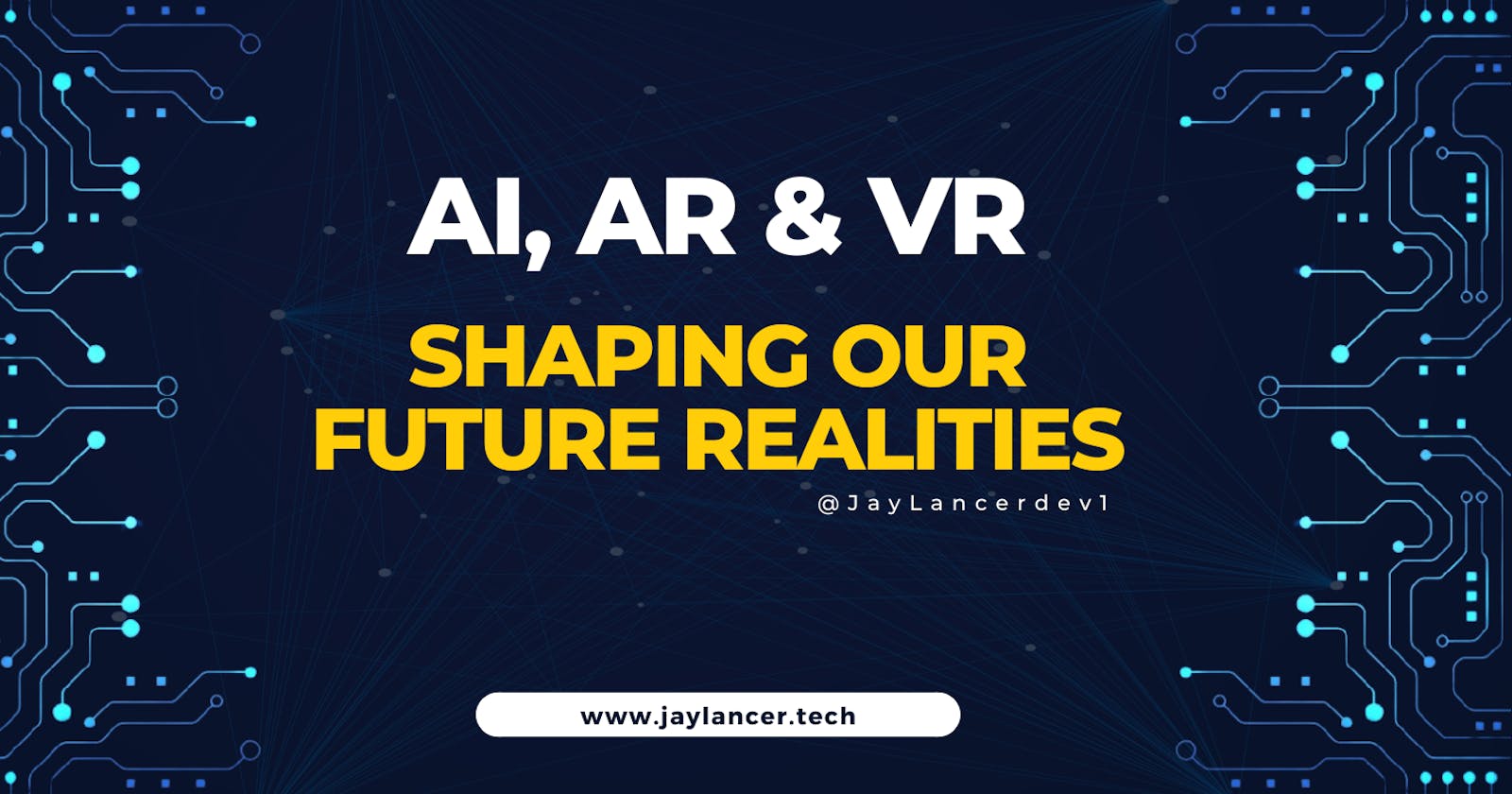In recent years, there has been a significant buzz around artificial intelligence (AI), augmented reality (AR), and virtual reality (VR). These emerging technologies have been transforming various industries, including business, healthcare, education, entertainment, and real estate. With their advanced capabilities, they are predicted to shape our future realities in profound ways. In this article, we will explore the evolution, advantages, and applications of AI, AR, and VR in different sectors, as well as their potential future implications.
Keywords: Artificial Intelligence, Augmented Reality, Virtual Reality
Understanding AI, AR, and VR
AI, AR, and VR are often grouped together as emerging technologies, but they are distinct in their capabilities and applications. AI involves the development of machines that can learn, reason, and perceive their environment. AR overlays digital information onto the physical world, providing users with real-time information and enhancing their experience. VR, on the other hand, creates a simulated environment that can be similar or completely different from the real world, which users can interact with using specialized devices.

The Evolution of AI, AR, and VR
AI has been around for several decades, but it has only recently gained traction due to the development of deep learning algorithms and big data analytics. AR and VR have also been around for several decades, but it was not until the advent of smartphones and gaming consoles that they became widely accessible to consumers. With the increased availability and affordability of these technologies, we are now seeing widespread adoption across industries.
Advantages of AI, AR, and VR
AI, AR, and VR offer various advantages across industries. In business, AI can help automate routine tasks, analyze large data sets, and improve decision-making. AR and VR can enhance customer experiences, improve training, and provide immersive entertainment. In healthcare, they can assist in surgeries, train medical professionals, and simulate medical scenarios. These technologies can also personalize content, create interactive experiences, and provide real-time feedback to users.
AI, AR, and VR in Business
AI is being used in various industries, including finance, marketing, and manufacturing, to automate processes, personalize customer experiences, and optimize operations. AR and VR are also being used to enhance product visualization, employee training, and customer engagement. For example, AR can be used to create virtual try-on experiences for customers to visualize products, and VR can be used to simulate real-life scenarios for employee training.
AI, AR, and VR in Healthcare
In healthcare, AI is being used to analyze patient data, diagnose diseases, and develop treatment plans. AR and VR are being used to provide virtual therapy, simulate surgical procedures, and train medical professionals. These technologies can improve patient outcomes, reduce medical errors, and provide a safe and controlled environment for medical training.
AI, AR, and VR in Education
In education, AI is being used to personalize learning, improve assessment, and provide feedback. AR and VR are being used to create immersive learning experiences, simulate historical events, and enhance visualizations of complex concepts. These technologies can provide students with engaging and interactive learning experiences, which can improve retention and understanding.
AI, AR, and VR in Entertainment
AR and VR are being used to create immersive gaming experiences, enhance movie-watching experiences, and create interactive theme parks. AI is being used to personalize content, create music, and generate graphics. These technologies can create engaging and immersive experiences for users, which can increase user satisfaction and retention.
AI, AR, and VR in Real Estate
In real estate, AR and VR are being used to create virtual tours, improve property visualization, and enhance the customer experience. AI is being used to analyze market trends, predict property values, and personalize customer interactions. These technologies can provide potential buyers with a more realistic and immersive experience, which can increase the likelihood of a sale.
Future of AI, AR, and VR
The future of AI, AR, and VR looks promising, with potential advancements in areas such as natural language processing, haptic feedback, and brain-computer interfaces. These technologies are expected to transform the way we live, work, and interact with each other.
The future of AI, AR, and VR is exciting, with endless possibilities for innovation and advancement. One area of potential growth is in natural language processing, which involves the development of machines that can understand and interpret human language. This technology is already being used in virtual assistants such as Siri and Alexa, but it is expected to become even more advanced in the future.
Another area of potential growth is haptic feedback, which involves the use of touch and forces feedback to create a more immersive experience. This technology is already being used in some VR games and simulations, but it is expected to become more sophisticated and widespread in the future.
Finally, brain-computer interfaces are another area of potential growth, which involves direct communication between the brain and a computer. This technology is still in its early stages, but it has the potential to revolutionize the way we interact with technology and each other. For example, it could enable people with disabilities to control devices using their thoughts or allow for more seamless communication between humans and machines.
Overall, the future of AI, AR, and VR is bright, with endless possibilities for innovation and growth. As these technologies continue to advance, we can expect to see more personalized, immersive, and intuitive experiences across industries and applications.
Conclusion
AI, AR, and VR are transforming various industries and are expected to shape our future realities in profound ways. As these technologies continue to evolve, businesses and individuals should stay informed about their potential applications and implications. By leveraging the advantages of AI, AR, and VR, we can create more efficient, engaging, and immersive experiences for ourselves and our customers.
